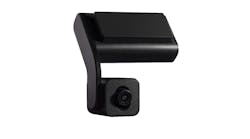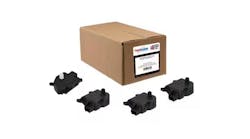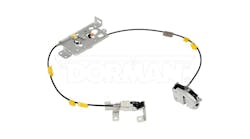The following steps are recommended by axle and suspension manufacturer SAF-Holland for properly measuring the ride height on trucks equipped with drive axle air suspensions. The company recommends following the specific height control valve manufacturer’s instructions for ride height adjustment procedures, and the suspension and vehicle manufacturers’ maintenance manual instructions for safety and proper practice.
To check the current ride height of your suspension, use the following steps:
- Determine the vehicle manufacturer’s correct suspension ride height for the vehicle. Determine which axle the height control valve is attached to on multi-axle vehicles.
- Drive the vehicle forward in a straight line for at least two vehicle lengths to release any bushing windup.
- With the vehicle unloaded and/or trailer disconnected on a level surface, chock the front tires to prevent the vehicle from rolling forward or backward.
- Pressurize the air system with a constant supply of air in excess of 70 psig (4.8 bars), and check that all air springs properly inflate and raise the suspension to the proper ride height.
- On the axle where the height control valve is attached, measure the distance from the bottom of the frame rail to the ground.
- Measure the distance from the center of the wheel to the ground.
- Subtract the measurement found in Step 6 from the measurement found in Step 5 to determine the current ride height of your suspension.
- Example: The bottom of the frame rail to the ground measures 30" (762mm) and the center of the wheel to the ground measures 20" (508mm). Subtract the second measurement (20") from the first measurement (30") and this equals 10" (254mm) for current ride height (30" – 20" = 10")
- Check the value against the specification in Step 1.
Note: If the measured ride height is not within +/- 0.25" (6mm) of the manufacturer’s specification, it must be adjusted using the height control valve. Refer to the height control valve manufacturer’s instructions for adjustment procedures of that equipment and use the suspension and vehicle manufacturers’ maintenance manual instructions for the proper procedure for making adjustments. These sources of information typically contain diagnostic measures to follow to troubleshoot the cause and effect of problems.
Information provided by: SAF-Holland


